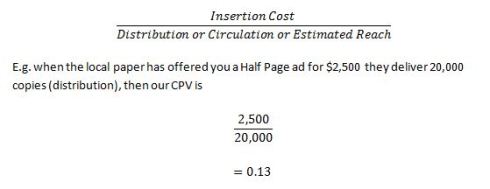For any business setting the price of your products is one of the hardest decisions that you have to make (along with picking a brand name, choosing the logo colour, deciding on your range…!) There are a few different approaches that you can take, but the most important thing you need to do is build value. This post will discuss the role of value in pricing and show you the 3 golden rules for building your price on a value proposition.
What is Value?
Value is a perception. It’s the reason why a well cut, good fitting little black dress for $150 can be as savvy a purchase as buying 3 tanks for $20. The price paid is considerably different, but so is the expectation of quality, enjoyment and longevity. Value is the combination of all our feelings towards the item we are purchasing. To set the price, we need to understand the value of our product to our consumer.
Many years ago I was the category manager for a premium cosmetics and perfume company. When it came to setting the price on skin care products that were perceived to rewind the aging process, we set the price by analysing what the consumer would pay, based on what it was worth to them – the value they saw in the product. The product cost was around $10, yet the consumer valued it enough to be willing to pay well over ten times that amount.
In our post “How to Measure Success” we looked at how to analyse your gross profit and your wholesale margin, which are both valid ways to set your retail price. But some products are worth far more than they cost to produce, be it because of desired design, quality workmanship or inherent benefits, and this is where developing your price model around value is most beneficial.
3 Golden Rules of Pricing for Value
Golden Rules of Pricing for Value
1. Understand Value-Based Pricing
When you set price using a value based model your objective is to determine the level of satisfaction a customer derives from your product and what price they are prepared to pay for it. How valuable is the solution your product brings to their life? How long do they perceive it will last? How important are the attributes to them?
Defining value includes analysing tangible and intangible attributes – that is what we can and cannot touch. The price of a Mercedes-Benz is set by what the brand believes the consumer will pay. The value is based on what they can touch – leather seats, alloy wheels, superior styling; but also what they can’t – associations of prestige, confidence and luxury.
There is no formula for value-based pricing, as each product will have its own value. You may find it helpful to do a competitive review to see how others are pricing similar offers and also survey your target market to understand what your offer means to them.
2. Create a Value Perception
Creating a value perception involves positioning your product or service in the market so that it is desirable. The more consumers want your product the more they will be willing to pay. How to do this depends very much on the type of product or service and who the target customer.
Generally speaking you can create positive value perceptions by paying attention to:
- The presentation of your brand elements including your logo, brand name and website / store front
- Building social media networks to have large numbers of engaged and active followers
- Educating your target on the benefits your product can bring (remembering both the tangible and intangible)
- Demonstrating brand advocacy through customer reviews and testimonials
3. Maintaining your Value Proposition
When you use value-based pricing, your approach hinges on your target market buying into your offer and seeing the value in it. As it comes time to promote your product, the strategy you choose is critical. Thinking back to Mercedes-Benz, how often do you see an ad for Mercedes-Benz:
“Mercedes Benz A-Class, was $90,000, now $50,000. For three days only!”
A product that is marketed on its value needs to maintain that value and it can easily be tarnished. If you can sell your product for half the price you were charging, your consumer will start to question its true cost, and the value they see in it may decline.
Value adding strategies are the best way to maintain value in your product while creating new reasons to buy. The most well-known value add strategy is the free gift. Offering a free gift with purchase does not devalue the original product in any way, you may be directing some profit into funding the gift instead of using some profit to discount the gift.
Free gifts can also be used to drive multi unit purchases e.g. Spend $52 dollars to get your free gift, setting the spend qualifier above your key products.
With the rise of online stores, another strong value add offer is Free Postage on a required spend. Firstly, we suggest you have a flat postage rate in place e.g $6.95 Flat Fee Postage, that way you have created a value for the postage; then set a minimum spend to receive the postage free e.g. Free Postage on orders over $100. This will encourage multi unit purchases, delivering you more profit per transaction, helping you fund the free postage profitability.
Following the 3 golden rules of pricing for value has the potential to deliver you more profit than pricing to make a margin requirement. What is your product? Can you price for value? As part of our mini marketing plan, we analyse your competitors pricing models and give you recommendations on how you should price within the market. For more information visit our product page.
Until next time, V is for Value and I hope you found it valuable!
Mary-Anne











